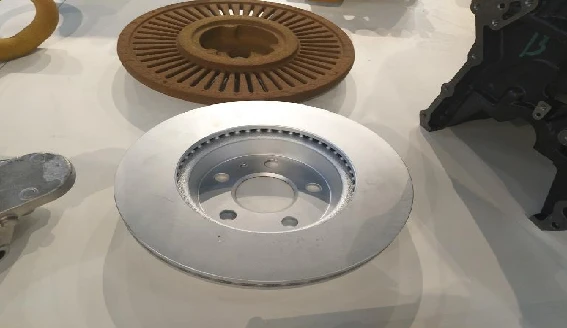The History of Sand Casting
Sand casting, one of the oldest and most versatile metal casting processes, has been an essential method in the manufacturing of intricate metal parts and components for thousands of years. Its origins can be traced back to ancient civilizations, where craftsmen discovered that they could utilize sand's unique properties to create molds for casting metals.
Ancient Beginnings
The history of sand casting dates back to around 3000 BC in ancient Egypt, where artisans employed a primitive form of sand casting to produce jewelry, tools, and weapons from bronze. The process involved compacting sand around a model made of wood or clay to form a mold. Once the mold was created, it was filled with molten metal, which would then cool and harden into the desired shape.
Over the centuries, the technique spread across various cultures and regions, from the Middle East to Asia and Europe. Each civilization refined the process, utilizing locally available materials and developing unique methods. For instance, the Chinese began using sand casting around 2000 BC and made significant advances that would later influence metalworking practices worldwide.
The Roman Era and Beyond
The Roman Empire played a crucial role in the development of sand casting techniques. By 100 AD, the Romans had established a sophisticated metal casting industry that incorporated advanced methods, including sand casting. They produced a wide array of items, from military equipment to intricate statues and everyday household items. The use of sand casting allowed for mass production, which significantly contributed to the economic expansion of the empire.
During the Middle Ages, sand casting remained an integral part of metalworking. Blacksmiths and foundries in Europe used this technique to create everything from heavy machinery parts to decorative elements for architecture. The invention of the printing press in the 15th century required precision components, further increasing the demand for reliable casting methods. The Renaissance period saw a resurgence in artistry, and sand casting was employed to create elaborate sculptures and architectural details.
history of sand casting

The Industrial Revolution
The Industrial Revolution in the 18th and 19th centuries marked a significant turning point for sand casting. With the advent of new technologies, including the steam engine and the introduction of iron and steel as primary materials, the casting industry experienced exponential growth. Innovations such as the use of core molds and improved sand mixtures, including silica and clay, enhanced the quality and consistency of castings.
As industries expanded, so did the applications of sand casting. The automotive and aerospace industries adopted sand casting to produce complex engine components and structural parts. The ability to create intricate shapes and designs made sand casting a preferred method for manufacturers seeking efficiency and cost-effectiveness.
Modern Developments
Today, sand casting remains a key process in various sectors, including automotive, aerospace, and construction. The introduction of computer-aided design (CAD) technologies has revolutionized the way mold designs are created, allowing for greater precision and customization. Modern foundries use advanced sand-binding agents and automated equipment to improve the efficiency of the casting process while reducing environmental impact.
The rise of 3D printing technology has also influenced sand casting. Rapid prototyping and the ability to create complex mold geometries have led to the development of new techniques, such as 3D sand printing, which enhances the traditional sand casting process. This innovation allows for quicker production times and the ability to create one-off parts without the need for extensive tooling.
Conclusion
The history of sand casting is a testament to the ingenuity of human craftsmanship and engineering. From its ancient origins to its integration into modern manufacturing, sand casting has evolved while remaining relevant in a constantly changing industrial landscape. Its versatility and cost-effectiveness ensure that sand casting will continue to play a crucial role in the production of metal components for generations to come. Whether in ancient Egypt or today's high-tech foundries, the fundamentals of sand casting remain a foundational technique in the world of metalworking.
Post time:9 月 . 29, 2024 21:32
Next:инвексонӣ vs холӣ
